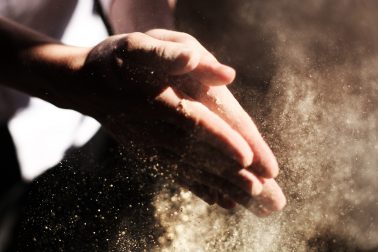Construction dust: the silent killer
 The different types of dust found on construction sites are more than just a nuisance; they can be extremely harmful to workers. The hazards of these dusts shouldn’t be underestimated because 100 times more workers are dying from diseases caused by the work than actual construction accidents. Each year, an estimated 3,500 people die from work-related cancers with many more suffering from life-changing illnesses.
The different types of dust found on construction sites are more than just a nuisance; they can be extremely harmful to workers. The hazards of these dusts shouldn’t be underestimated because 100 times more workers are dying from diseases caused by the work than actual construction accidents. Each year, an estimated 3,500 people die from work-related cancers with many more suffering from life-changing illnesses.
HSE’s construction dust blitz
The Health and Safety Executive (HSE) are tackling this problem by carrying out inspections focused specifically on respiratory risks and occupational lung disease. The inspections include checking on the measures employers have in place to protect their workers’ lungs.
Duties as an employer
As an employer you should take reasonable, effective steps steps to keep them safe. The Control of Substances Hazardous to Health (COSHH) Regulations 2002 covers any activities which may expose workers to construction dust. This requires employers to:
- Assess the risks
- Control the risks
- Review the controls
Types of construction dust
On building sites, we usually find the following types of dust:
- Wood dust caused by both soft wood and hard wood as well as wood-based products like plywood and MDF.
- Silica dust found in materials such as sandstone, mortar and concrete.
- Lower toxicity dust which refers to materials with little or no silica such as gypsum, marble, limestone and dolomite.
Health risks
There are a number of diseases effecting the lungs and airways caused by breathing in construction dust. These include:
- Asthma
- Silicosis
- Chronic obstructive pulmonary disease (COPD)
- Lung cancer
Silicosis and asthma can develop quite quickly. The other diseases take time to develop as the harm caused by the dust builds up. This means the worker is unaware of the damage taking place internally. By the time it becomes apparent, the damage is often serious, resulting in life-changing illness and premature death.
Assessing the risks
A thorough risk assessment will enable you to recognise when workers on your construction site may be at risk. Signs to look out for include:
- High-energy tasks. Tools such as cut-off saws, grinders and grit blasters produce a vast amount of dust in a short period of time.
- Work area. Although the risks of dust outside should not be dismissed, it is true that the risks are greater in more confined spaces.
- Long periods of time. A task which takes a long time may result in greater exposure to harmful dust.
- Regularity. As the damage often accumulates over time, regularly carrying out a task will increase the risks.
Controlling the risks
One way to reduce the risks is simply to reduce the amount of dust produced. At the very least, you should prevent excess inhalation of dust. You can do this by:
- Less cutting from using the correct size of building materials.
- Utilising less powerful tools.
- Using silica-free abrasives.
- Changing the method of work.
- Using water to damp down dust.
- Removing the dust by using on-tool extraction while it’s being produced.
RPE
Respiratory Protective Equipment (RPE) is the last line of defence if reducing the dust is not enough. Depending on the task, it may include respirators or dust masks. Before purchasing, ensure that the RPE you have chosen meet the risks and is also comfortable for the wearer.
If the RPE is going to be used with other forms of PPE, make sure it is compatible, that it fits the workers and that all necessary workers know how to fit it.
Other controls
Other controls might include rotating your employees so they are not always working on the same high-risk task, providing ventilation and suitable work clothes, and educating your employees how to identify and reduce the risks. If they are carried out properly, controls can be really effective. RPE needs to be well-maintained and monitored to ensure it is used correctly. It’s important to monitor what your employees are exposed to so that the controls can be adjusted as necessary.
